There are different types of walking aids, for different needs.
Let’s meet three people who use walking aids. Each person uses a different type of walking aid, because their needs are different.
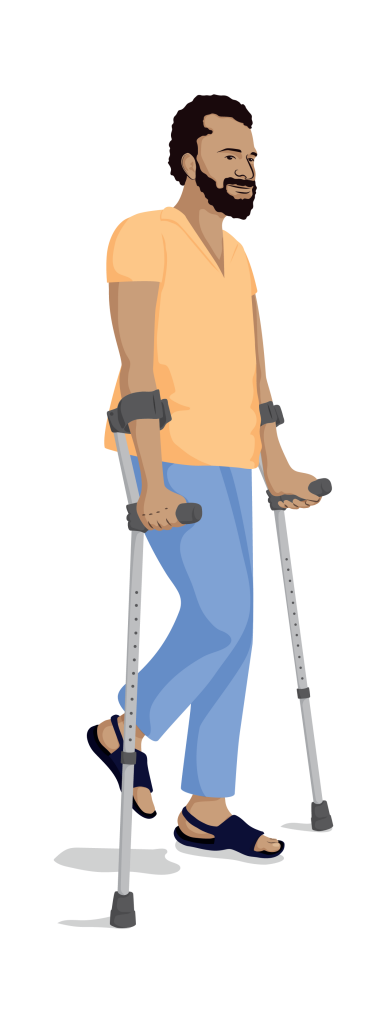
Asif has a below knee prosthetic leg. He uses forearm crutches when tired, or when he is not wearing his leg.

Cali has arthritis. She uses a walking frame. Due to her frailty, poor coordination, pain, she uses a walking frame to help her walk indoors.

Dinah has cerebral palsy. She uses a posterior walker. She cannot walk without extra support. She needs help with balance and support of her weak leg muscles.
Asif, Cali and Dinah each use a different type of walking aid.
People need the right type of walking aid, depending on their physical condition, lifestyle and environment.
Using the wrong walking aid can lead to problems such as falling or injury.
Read on to find out more about some of the most common types of walking aids.
Muletas de codo
A las muletas de codo también se les llama muletas de antebrazo.
Elbow crutches are good for children and adults who:
- Walk using either one or two legs
- Have good upper body strength, coordination and balance

Elbow crutches parts include (see the labelled image above):
- Shaft – a strong tube that forms the main part of the crutch
- Elbow cuff – fixed to the top of the shaft the cuff is shaped to fit around and support the forearm
- Hand grip – a shaped grip fixed to the shaft which is designed to be held and to bear the person’s weight
- Rubber tip – fixed to the bottom of the shaft the tip provides grip between the crutch and the floor
Read on to see why Asif chooses to use elbow crutches
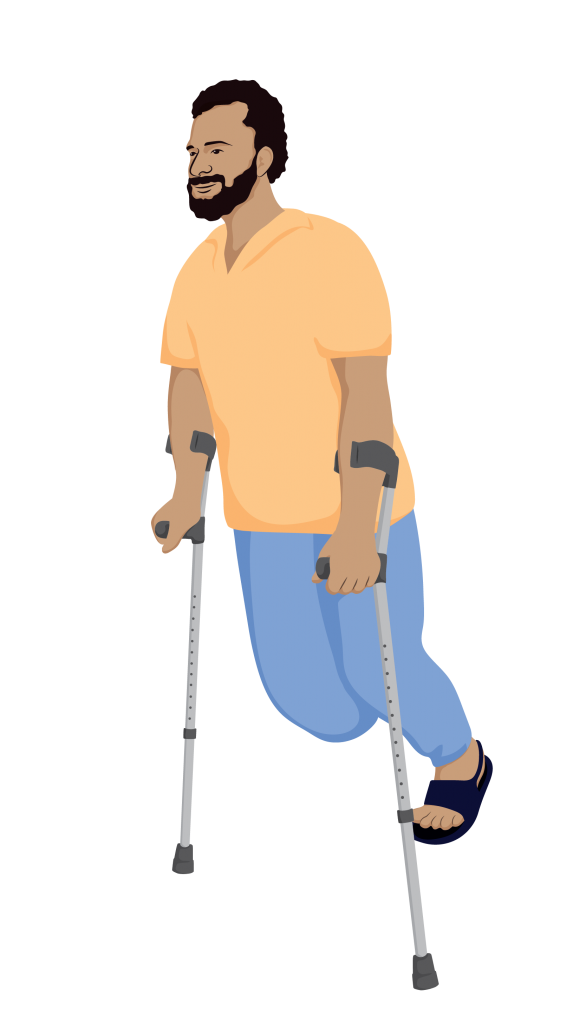 Elbow crutches suit Asif because:
Elbow crutches suit Asif because:
- They are lightweight and easy to take with him wherever he goes
- Le permite utilizar las manos cuando está de pie, sin tener que dejar las muletas.
- They work well outdoors and over rough ground
Muletas de axila
Las muletas de axila también pueden denominarse muletas axilares.
Axilla crutches are good for children and adults who:
- Walk using one or two legs
- Need a bit more support than is provided by elbow crutches

Axilla crutches parts include (see the labelled image above):
- Shaft – an adjustable metal frame which supports the other parts of the crutch
- Axilla pad – a strong, padded support fixed to the top of the crutch designed to bear the person’s weight positioned in their the armpit
- Hand grip – a shaped grip to be held in the person’s hands to allow movement of the crutch
- Rubber tip – fixed to the bottom of the shaft the tip provides grip between the crutch and the floor
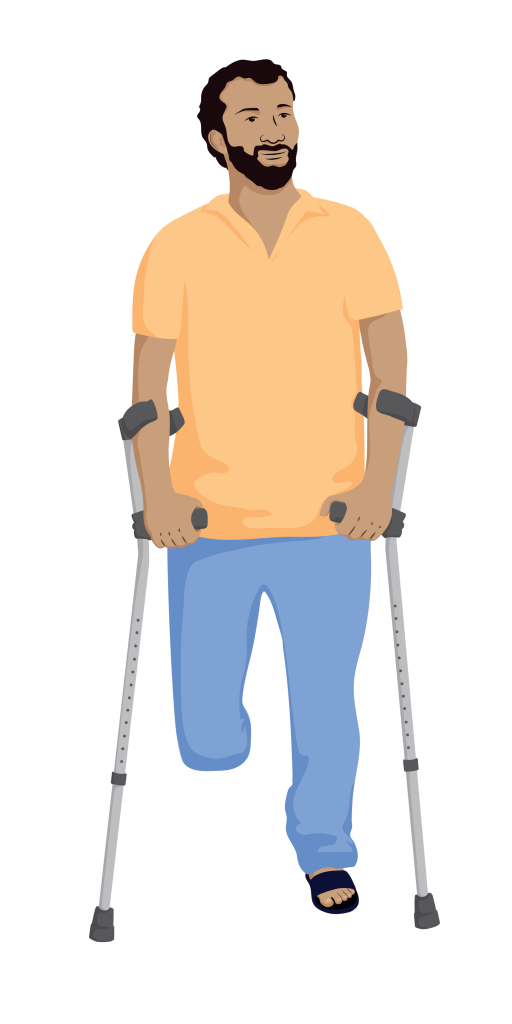
Pregunta
Would axilla crutches be a good choice of walking aid for Asif?
Axilla crutches are not as convenient as elbow crutches. They can also cause damage long term because of pressure under the armpits.
Andador
Los andadores convencionales son útiles para las personas que:
- Walk using one or two legs
- Are able to use both hands
- Need help to balance
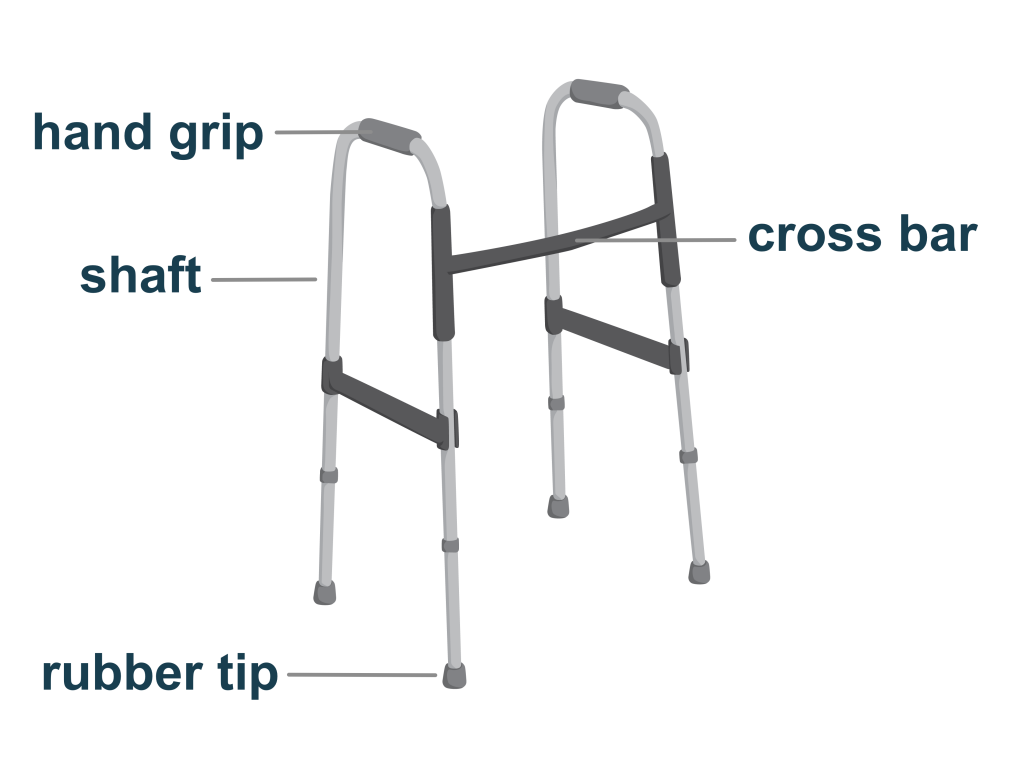
Walking frame parts include: (see the labelled image above)
- Shaft – a strong metal structure that forms the main part of the frame
- Hand grip – shaped grips that the person holds to support their weight and also to move the frame
- Cross bar – a metal bar that links the two halves of the frame
- Rubber tip – fixed to the feet of the frame and provide grip on the floor
Read on to see why Cali chooses to use a walking frame

A walking frame suits Cali because it provides her with more support and stability than crutches.
She only uses her walking frame indoors, where the ground is flat. Outdoors the ground is uneven, and the walking frame is not stable.
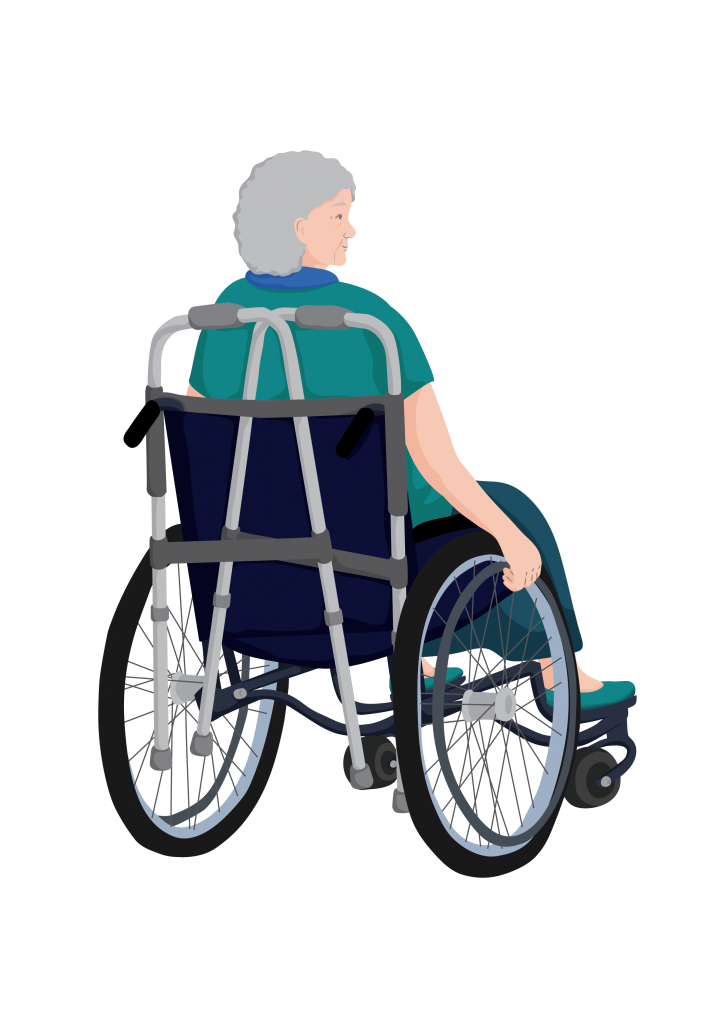
Cali uses a wheelchair outdoors.
Andador de cuatro ruedas
Los andadores de cuatro ruedas también pueden denominarse andaderas de cuatro ruedas.
Los andadores de cuatro ruedas son útiles para las personas que:
- Walk using two legs
- Are able to use both hands and have strong hands
- Need a small amount of support to walk and have good coordination
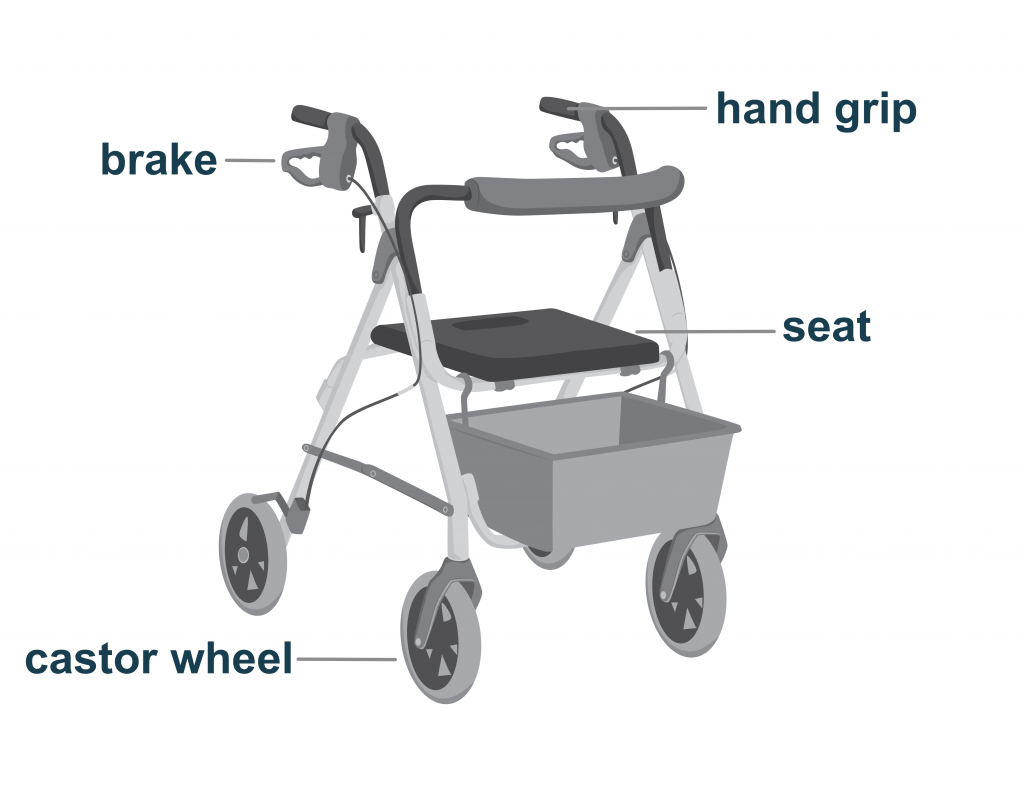
Rollator parts include (see the labelled image above):
- Hand grip – shaped grips that are held by the person to bear their weight and also to move the rollator
- Brake – a hand lever activated brake that allows the person to stop the rollator
- Seat – an integrated platform which the person can sit on when not walking
- Castor wheels – wheels on the base of the rollator that allow it to move without being lifted
Pregunta
¿Podría Cali también utilizar un andador de cuatro ruedas?
Cali tried a rollator, however her hands were not strong enough to use the brakes and she lost control. This made her feel unsafe. She prefers a walking frame.
Posterior walker
Posterior walkers can also be called Kaye walkers.
Posterior walkers are good for children who:
- Walk using two legs
- Can hold the walker with both hands
- Need support to balance
- Can understand how to use the walker

Posterior walkers include the following parts (see the labelled image above):
- Hand grips – shaped grips that are held by the person to bear their weight and also to move the walker
- Rear bar – a metal bar that connects the two halves of the adjustable walker frame behind the person
- Shaft – an adjustable metal frame that supports the other parts of the walker
- Castor wheels – wheels on the base of the walker that allow it to move without being lifted
Read on to see why Dinah chooses to use a posterior walker
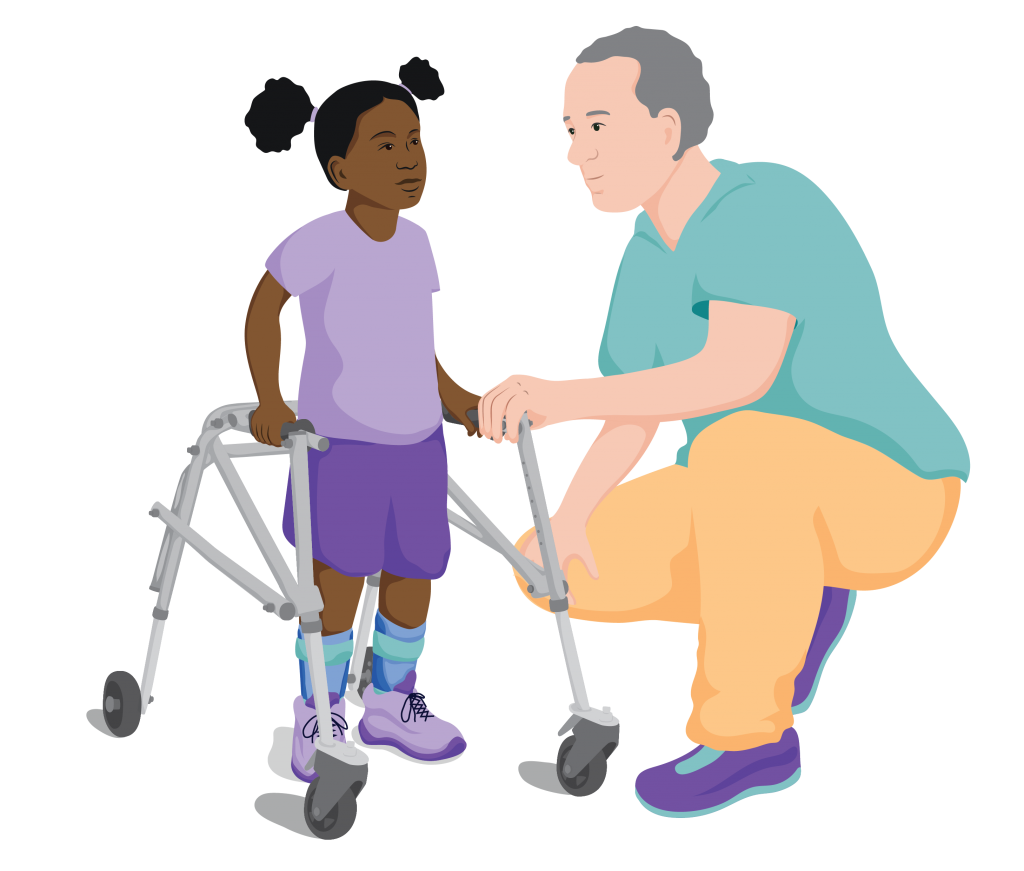
A posterior walker works well for Dinah because it helps her to walk with a natural walking pattern and posture, because the hand grips are close to her side.
Dinah began using her posterior walker at school. She had regular practise with a trained rehabilitation worker. When she was using it well, she began using it at home as well as at school.
Dinah cannot use her walker to go up steps; and she also finds it difficult to use outside as the ground is uneven and sandy. If Dinah stays on hard or paved surfaces paths, it is OK.
Bastón
Los bastones son buenos para las personas que:
- Walk using two legs
- Need a small amount of support while walking and have good balance and upper body strength
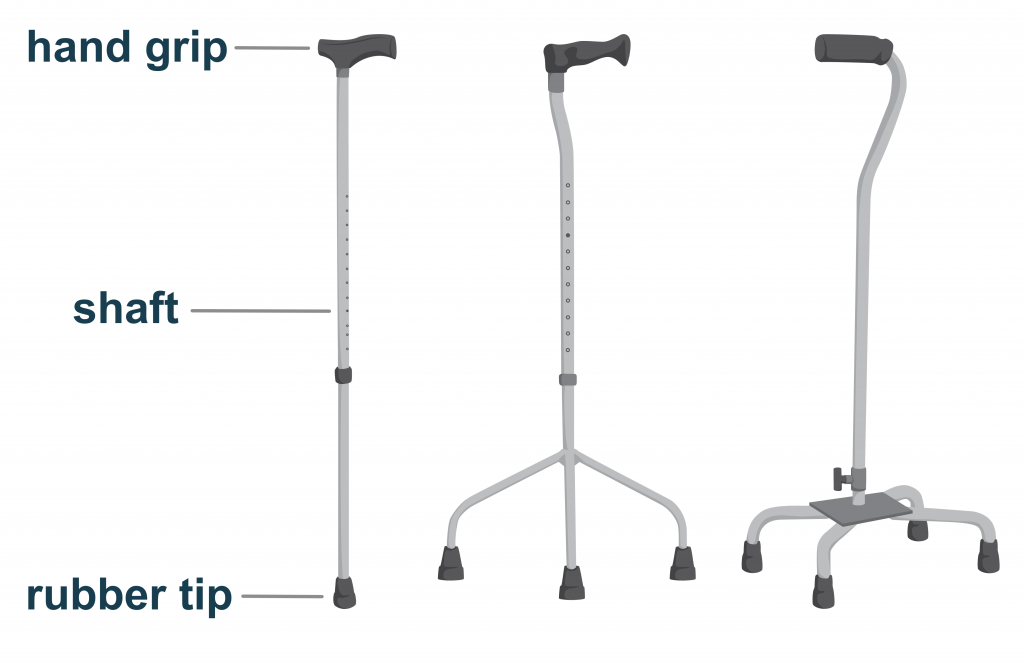
Walking stick parts include (see the labelled image above):
- Hand grip – a shaped grip held by the person and used for partial weight bearing and to move the stick
- Shaft – a wooden or metal shaft that may be adjustable in length
- Rubber tip – fixed to the bottom of the shaft (or multiple feet) of the walking stick, the tip provides grip between the stick and the floor